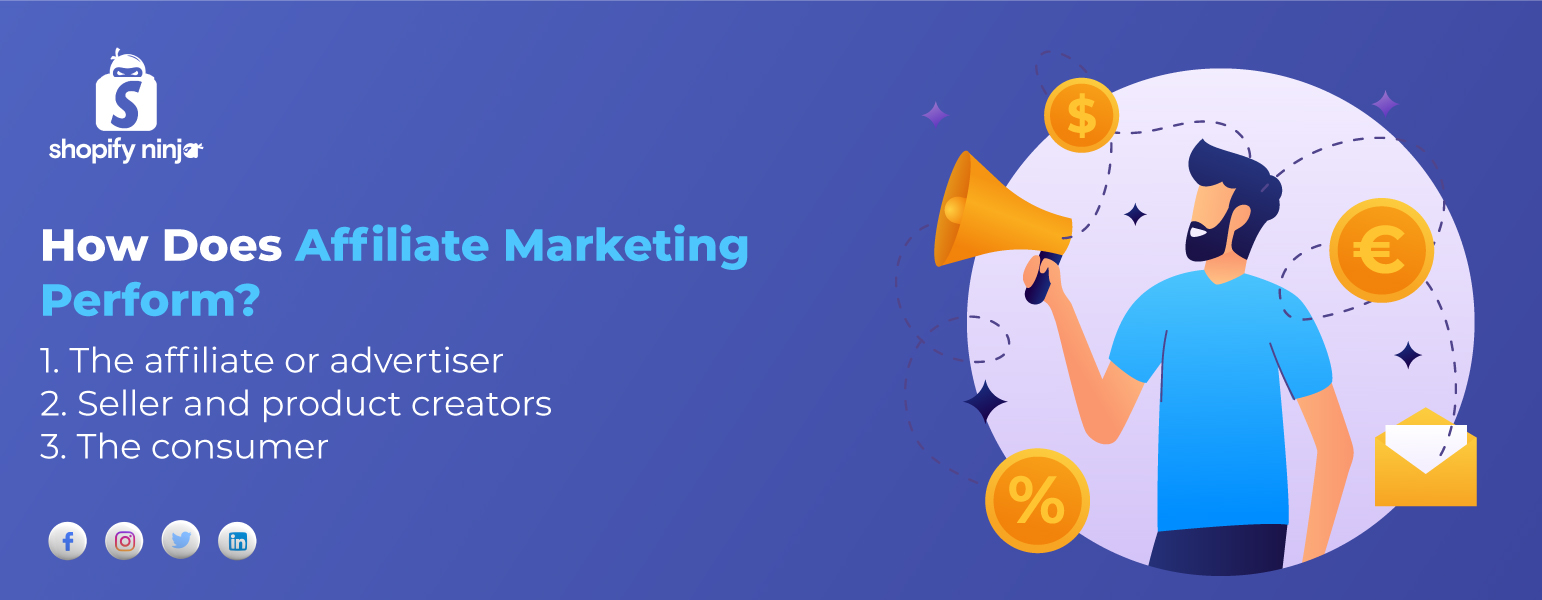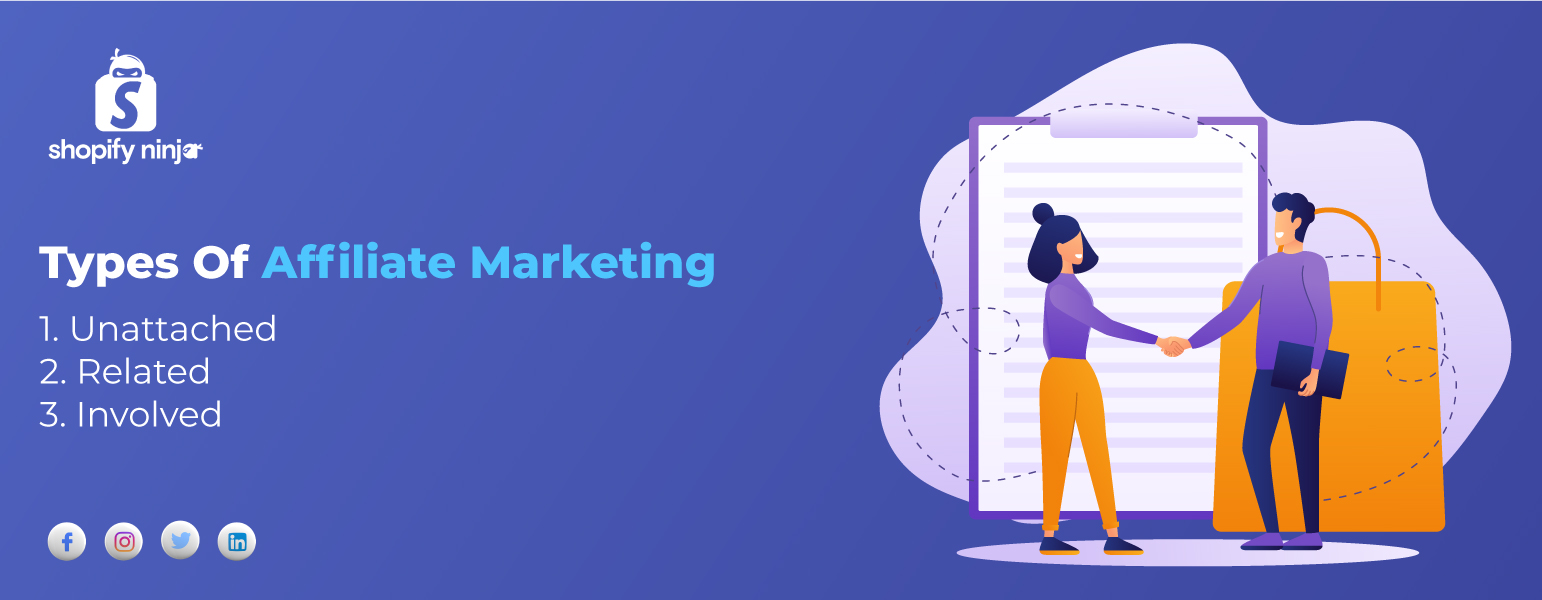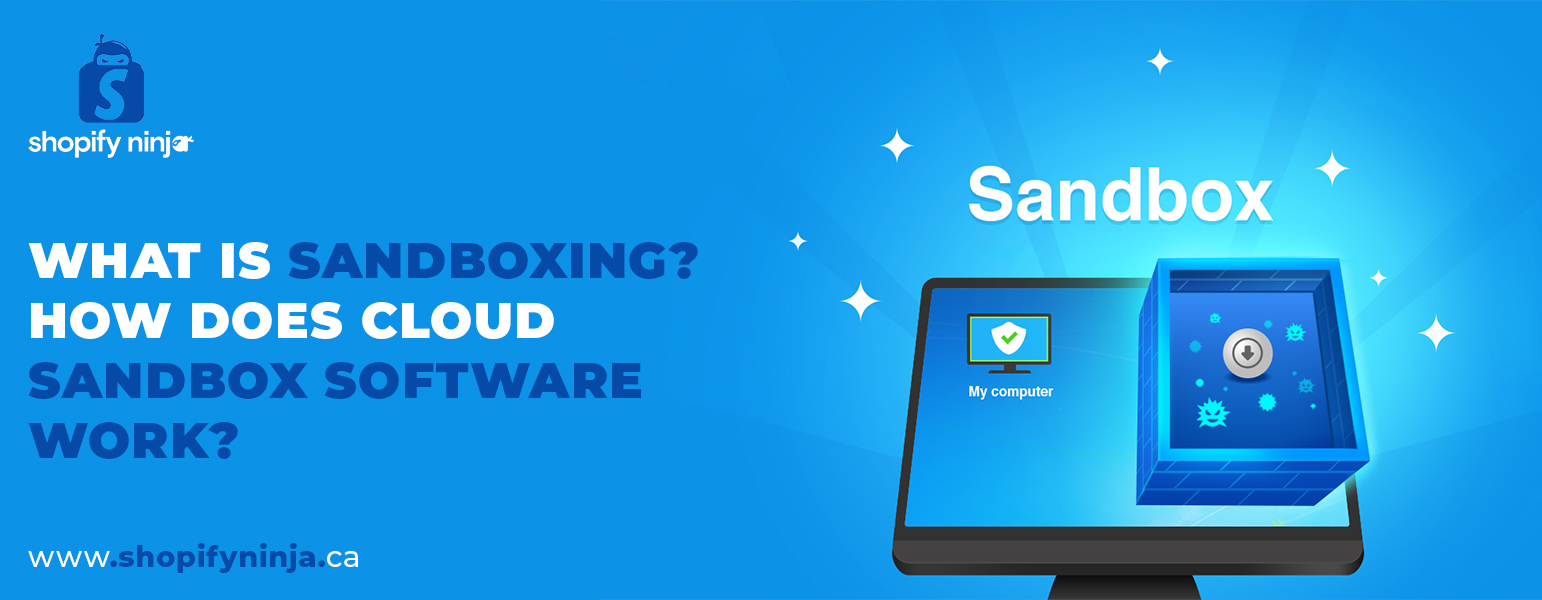Hey, do you want to make money from anywhere, anytime even while you are sleeping on your bed?
This is the world behind affiliate marketing.
Affiliate marketing is associated with the process in which a marketer earns a commission for marketing someone else’s product and website. The affiliate normally searches for the product they adore then promotes that product and gets the opportunity to earn the piece of commission from every sale they do. The tracking system of sallies through affiliates connects from one website to another.
Affiliate marketing is the best way to boost sales and produce important online revenue. Enormously advantageous to both affiliate marketers and brands, the latest push on the way to less conventional marketing tactics has surely paid off.
In reality, affiliate marketing used up in the US growth from $5.4 billion in 2017 to $8.2 billion in the year 2022, which refers to plenty of room for such searching to get a piece of the pie.
This article is a step-by-step beginner guide that will walk you through how to start your business of affiliate marketing and what perks you can expect.

How Does Affiliate Marketing Perform?
Affiliate marketing works by penetrating the accountabilities of product marketing and formation across parties. It influences the capabilities of the range of individuals for a more successful marketing strategy while offering contributors a share of the profit. To let this work, three diverse parties need to be involved:
- The affiliate or advertiser
- Seller and product creators
- The consumer
Let’s investigate the complicated relationship between these three parties to get connected to make sure affiliate marketing is effective:
Seller And Product Creators
The seller, no matter the single entrepreneur or big enterprise, is the supplier, product creator, merchant, or retailer with the product to the market. You can get a product in any term, can be a physical object or service such as household goods or makeup tutorials etc.
The seller is not necessary to be actively involved in the marketing as it is also called the brand, but the seller may be the advertiser and profit from the revenue sharing related to the concept of affiliate marketing.
For instance, an eCommerce merchant can be a seller that began the Dropshipping business and desires to reach a new target audience by paying affiliate websites to market their products. Or the seller could be the SaaS organization that is affiliated to assist in selling their marketing application.
The Affiliate Or Publisher
It is also called the publisher; the affiliate can be both a company and an individual that promotes the production of the seller in an amazing way to potential consumers. Also, the affiliate promotes the particular product to convince consumers that are important or beneficial to them and persuade them to buy the product. If the target customer does purchase the product, the affiliate gets the portion of the revenue made.
Affiliates frequently have a very particular target audience, to whom they promote, normally adhering to the interest of the audience. It makes the detailed niche or personal brand of those facilities the affiliate attracts consumers who are more likely to act on the promotion.
The Consumer
Certainly, for the affiliate system to perform there requires sales and the customer or consumer is the one who creates them.
Therefore, remember that the customer must be known that you, the affiliate are getting the commission off the product
An affiliate marketer needs to clearly and conspicuously reveal their relationship to the retailer, therefore enabling the consumer to know how much weight to offer your endorsement.
One can add a disclaimer like “the product I am going to use in this promotional video is not linked with me personally, the information is given by company X ….. And so on.

Types Of Affiliate Marketing
Usually, it is not clear whether an affiliate marketer has used the product, in reality, they are marketing for it or they are only doing it only for the money, sometimes it may not matter to the consumer one way or the other.
In some cases, customers may not trust an affiliate especially when the product is diet services or skincare products unless the person has tested and approved the product personally
Affiliate marketing has been categorized in different three types in 2009 by renowned marketer Pat Flynn; unattached, related and involved to assist the distinction between affiliate marketers who are closely tied to the product in contrast to those who are not.
1. Unattached
The unattached business model is associated with the affiliate marketer who has no connection to the service or product they are working on. They have the skills or right in the niche of the product, or they make claims regarding its use.
Normally, an unattached affiliate will operate PPC marketing campaigns using an affiliate link. That link would be clicked by the user and purchased on their own. Whereas unattached affiliate marketing may be astonishing because of its lack of commitment, it’s normal for those people who simply want to produce an income without investing much in the customer relationship and product.
2. Related
It is considered as the happy medium between unattached and involved, associated with affiliate marketing for those who do not use the product or service but are connected to the niche audience somehow. Such affiliates normally have some sort of influence in the area and a developed following and can therefore provide some authority.
For example, maybe you are working for a clothing brand you have never used before, but you get an audience via a YouTube channel or fashion blog. In these circumstances, you would be known as the related affiliate marketer.
The benefit of this kind of affiliate marketing Is that the affiliate possesses the skill set for product traffic, therefore they may have uncertainty recommending the bad product or service if they never actually used it in the past, possibly costing them the reliability of their audience.
3. Involved
Just like the name depicts, involved affiliate marketing explains those who are closely connected to the promoted product or service. The affiliate has attempted the product personally, trusts that it will offer a good experience and has the right to make claims regarding its use.
Instead of depending on PPC, the involved affiliate marketer utilizes their personal experience with the product in their marketing efforts, and users can trust them as trustworthy sources of information.
Of Course, this kind of affiliate marketing needs more legwork and time to establish credibility, but it will likely appear in higher payoffs down the road.
How Do Affiliate Marketers Get Paid?
An inexpensive and instant method of making money with no hassle of really selling the product, affiliate marketing has an indisputable draw for such people searching to enhance income online. But what is the process of affiliate get paid after linking the seller for the customer?
You may find the answer complicated.
Keep in mind that the consumer does not always require to purchase the product for the affiliate to get the commission. Based on the program, the contribution of an affiliate to the sales of the seller will be evaluated differently.
The affiliate may get paid in plenty of ways:
1. Pay Per Sale
This is the most common affiliate marketing structure. In this program, the supplier pays the affiliate a specific percentage of the sale price of the product after the purchases of consumers as a result of affiliate marketing strategies. In different words, the affiliate must get the investor to invest in the affiliate service of the product they are compensated for.
2. Pay Per Lead
The more complicated system, pay per lead affiliate marketing program pays the affiliate depending on the conversion of leads. The affiliate needs to convince the consumer to visit the website of the merchant and accomplish the desired action, no matter if it’s signing up for the trial of the product, filling the contact form, subscribing to the newsletter or installing the files software.
3. Pay Per Click
Well, affiliate marketing is great for producing traffic to websites and attempting to get customers to click and do actions. Affiliate marketing is mostly about SEO so it is a myth that is not surprising.
Therefore, while organic traffic is having no cost, SEO is simply unable to maintain affiliate marketers in such a saturated market which is why some affiliate marketers use PPC.
The main focus of PPC (pay per click) is incentivising the affiliate to redirect consumers from their marketing platform to the website or merchant. This means that the affiliate needs to engage the consumer to the extent that they will move to the merchant’s site from the affiliate’s side. In this type, the affiliate gets paid depending on the increase in web traffic.
There are a couple of ideologies in PPC:
CPA (cost-per-acquisition): with this concept, the affiliate gets the earning amount each time the seller or retailer acquires the lead, which is when an affiliate link brings the consumer to the online store of the merchant and then makes an action like subscribing to an email list of filling out the form of “contact us”
EPC (earnings-per-click): This is the evaluation of earnings per 100 clicks for all affiliates in the affiliate program of retailers.
4. Pay Per Install
In this program of payout, the affiliate gets the payment each time they direct the user to the website of the merchant and installs the product, usually the software or mobile app.
So if the retailer budgets for the $0.10 bid for every install produced through an affiliate program and the campaign appears in 1000, then the retailer will pay like ($0.10 x 1,000) = $100.
Bottom Line
A beautifully straightforward method, affiliate marketing through blogs, social media, reviews, webinar software and other platforms is the advanced frontier in the area of marketing that is just waiting to be used.
Want to read more excellent articles: 5 Passive Income Ideas to Help You Make Money In 2022






0 Comments